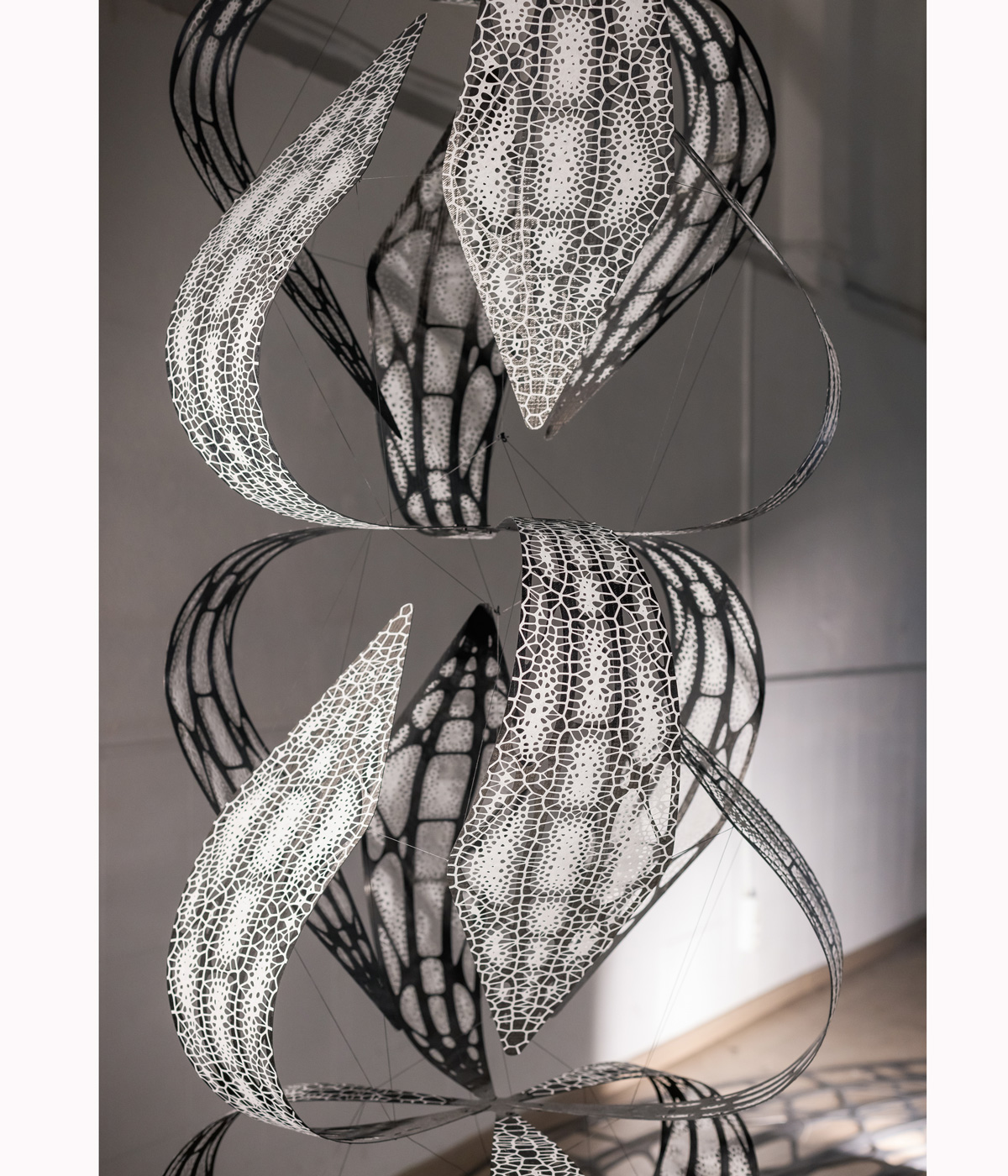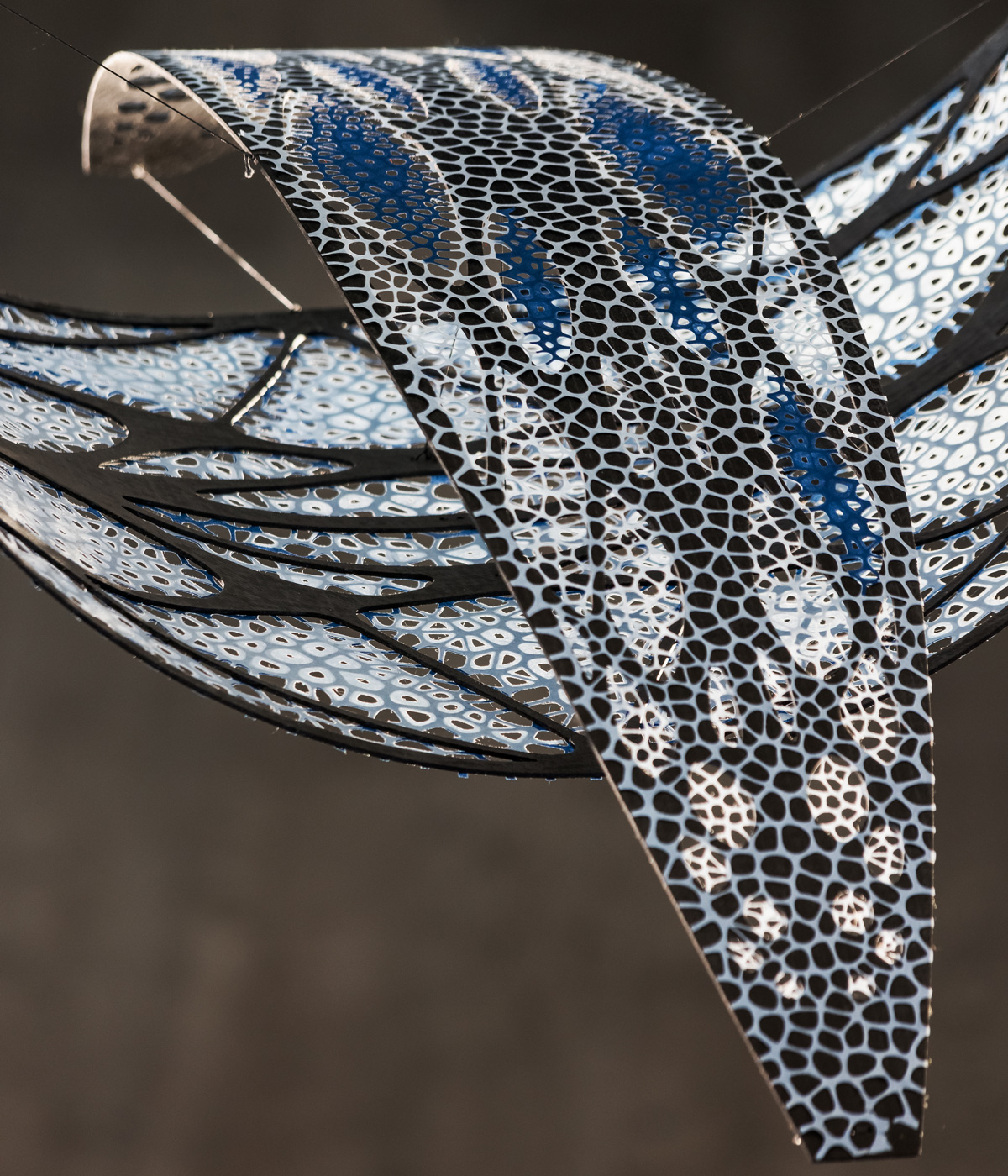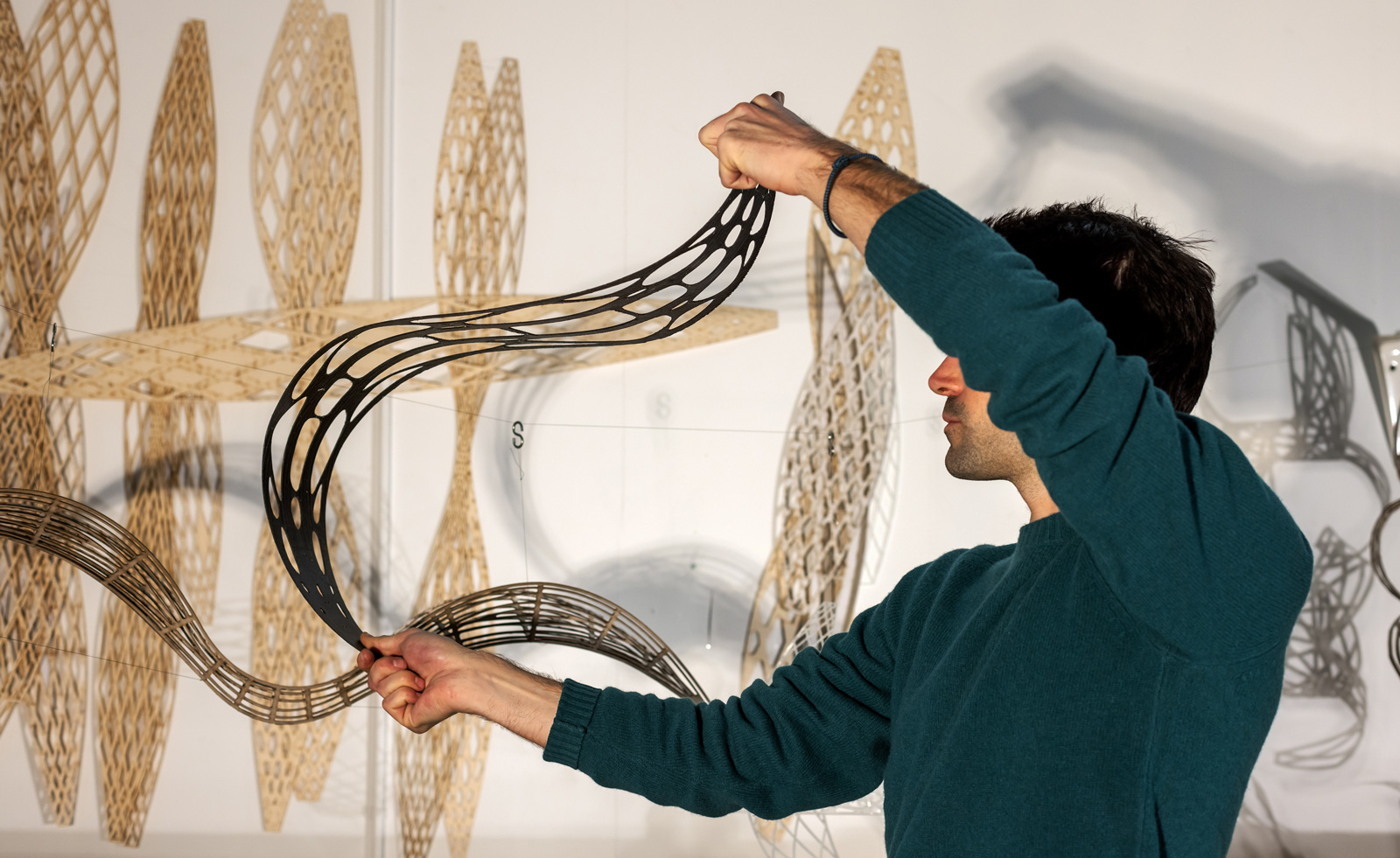
Artist Clément Vieille conducts an intricate play with materials in its scenography for the Hermès Watches and Wonders 2023 pavilion, which pays tribute to the complexity of time encapsulated in this year’s Hermès H08 collection.
The collaboration with Hermès is the second for Vieille, who created a structure at the Bâtiment des Forces Motrices for 2021’s remotely held event. Here, he continues to explore the links between materials, research and mechanics in work inspired by the juxtaposition of precision engineering with elegant design. ‘The theme “the finesse of time” led me to think of surfaces, kinds of membranes, both solid and flexible, opaque and translucent, which thanks to their lightness, could be set in motion,’ he tells us.
Clément Vieille on creating the Hermès Watches and Wonders pavilion
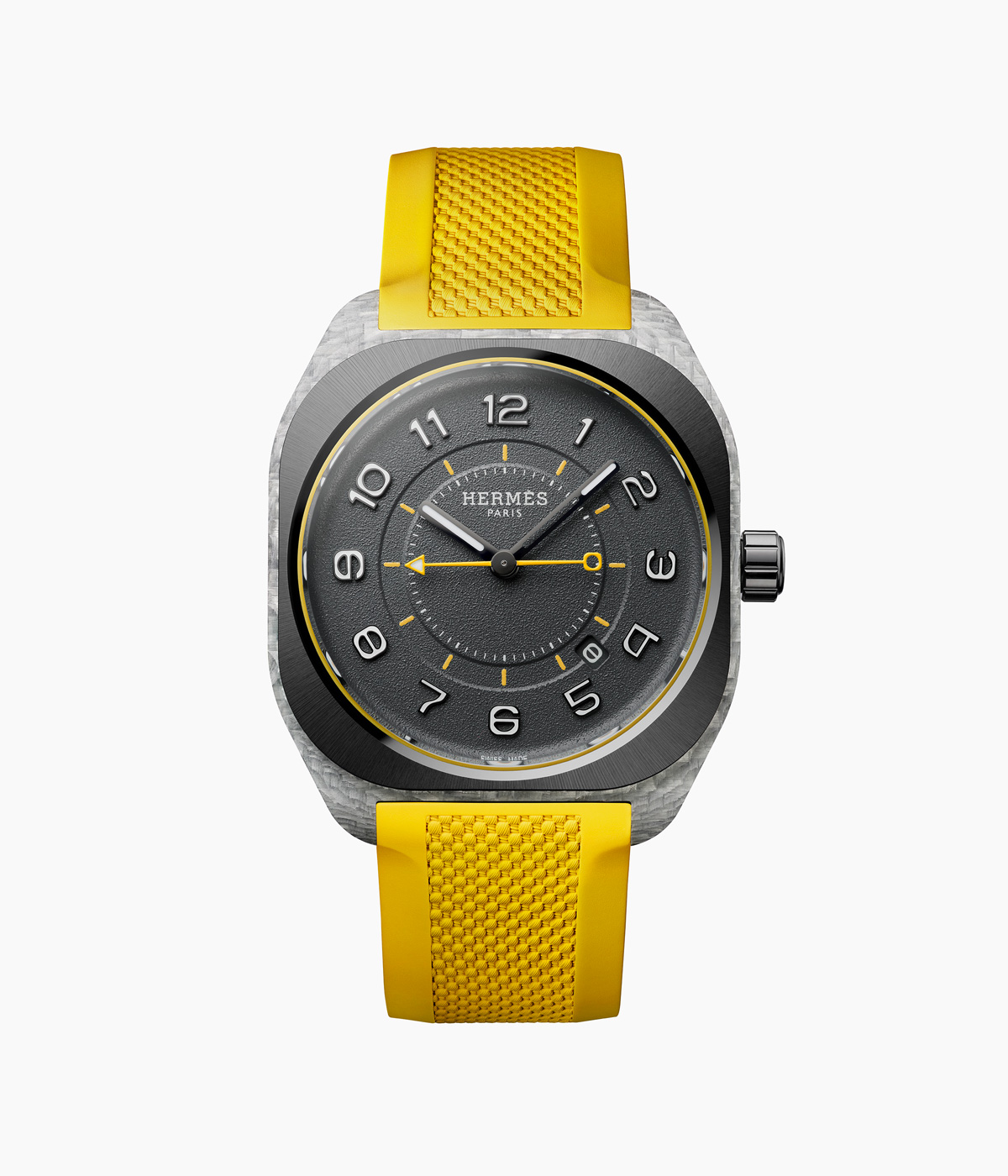
‘I immediately thought of two types of membranes found in nature, insect wings and leaves. These are wonders of lightness and resistance to stress. Then, the question of materials came up quite quickly. I chose carbon for its resistance to bending, and fiberglass paper for its translucency and flexibility. Composite materials allow me to flexibly work the most astonishing shapes. The whole unfolds through a set of structures, and not around a single central work. These are light sculptures, animated by swaying and rotation. They recall the materials of watches and echo the motion of a clock in a ballet of continuous movements.’
For artistic director of Hermès watches Philippe Delhotal, the partnership is a natural one. ‘Ever since its launch, we have talked about “the texture of time” when it comes to Hermès H08: because with Hermès H08 we play with materials,’ he says. ‘This year, we wanted to explore the finesse of materials, through our novelties and also within our Watches & Wonders Geneva pavilion, which reflects this approach to time in an immersive scenography exploring “the finesse of time”.’
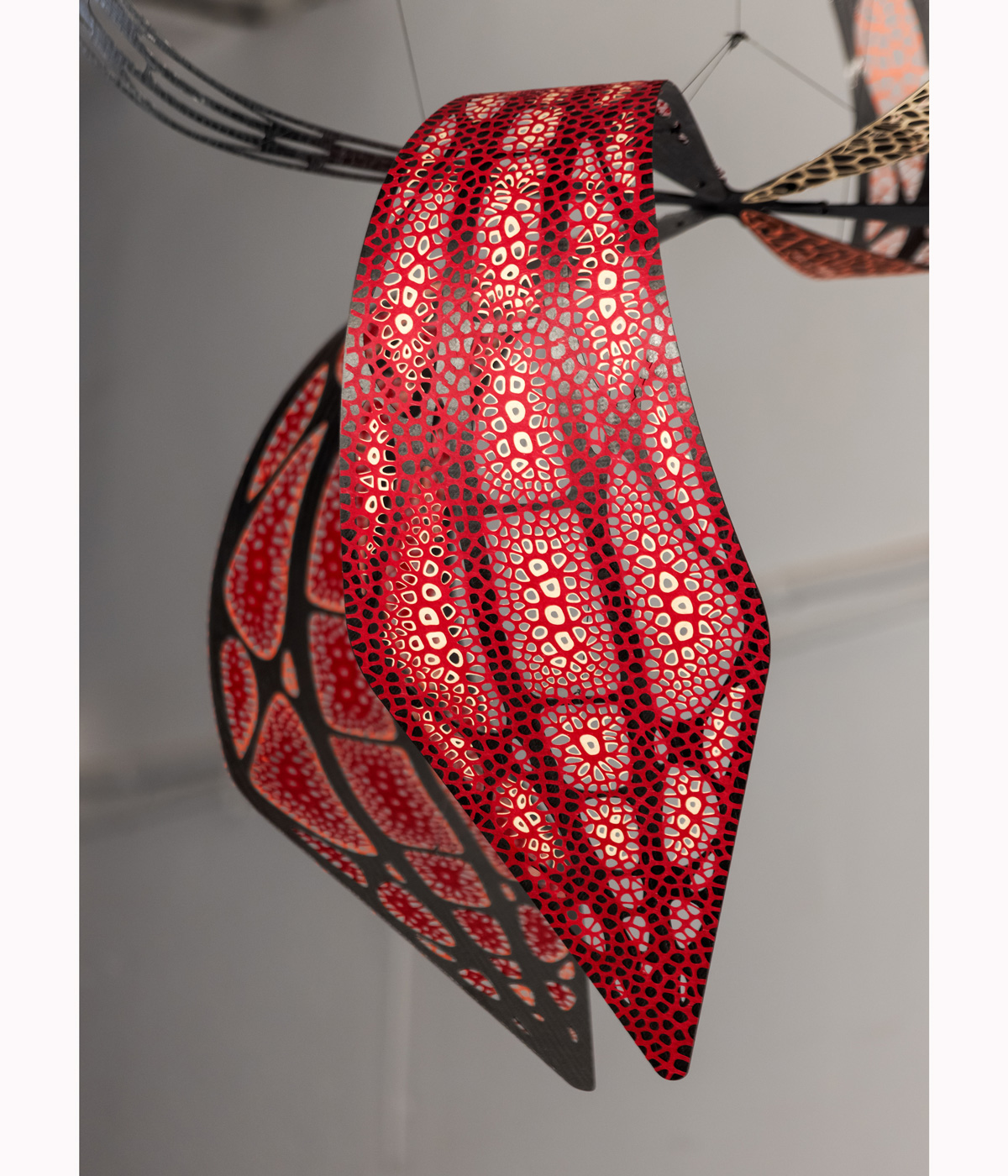
Vieille looks to the watch for inspiration, echoing the colours, fantastical narratives and proportions in his works, which flutter between time and space. ‘This project is a turning point for me: it's the first time I'm working alone, with my team of course, but without the support of an architect and a workshop,’ he adds. ‘For the first time, the entire work (from its conception to its technical realisation in its smallest details) will come out of my own studio.
‘This collaboration has taught me to think outside the boxes commonly used by artists, namely galleries, art centres, or other institutions. I realised that artistic practice could migrate everywhere, in a multitude of contexts, and that the important thing was to remain sincere in the proposal.’
